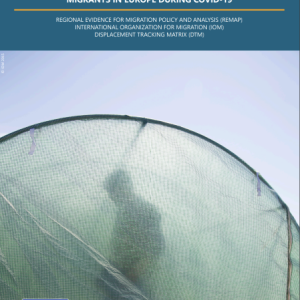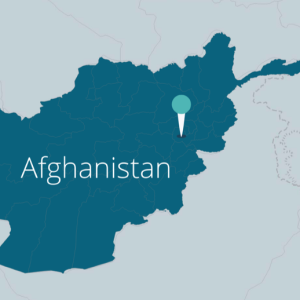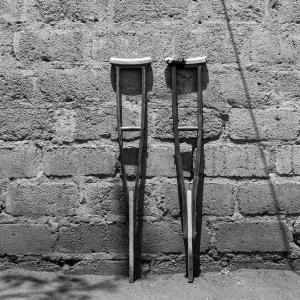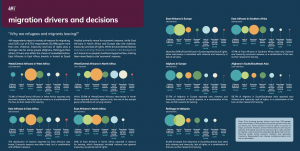
Migration data in Southern Asia
The densely populated sub-region of Southern Asia, encompassing 1.94 billion people (UN DESA, 2020) in nine countries – Afghanistan, Bangladesh, Bhutan, India, the Islamic Republic of Iran, Maldives, Nepal, Pakistan and Sri Lanka – has been shaped by major migratory movements, both within the sub-region and globally.
As well as hosting significant populations of refugees and Internally Displaced Persons (IDP), it is also one of the most important regions of origin for international labour migrants, in particular to the Gulf Cooperation Council (GCC) countries. Pre-COVID-19, emigrants from Southern Asia had sent an estimated 20 per cent of all remittances globally to their countries of origin in 2019 (World Bank, 2020).
As the region contains some of the world’s most disaster-prone countries (IOM, 2016), the number of people at risk of displacement due to environmental disasters is high.
Recent trends
COVID-19: The sub-region has been severely affected by the pandemic. As of 6 May 2021, India accounts for the vast majority of both the sub-region's infections and deaths (21.4 million and 234,083 respectively), followed by the Islamic Republic of Iran with nearly 2.6 million cases, as well as Pakistan and Bangladesh, with 845,833 and 769,160 cases (WHO, 2021). In most countries in the sub-region, testing has been very low, raising questions about the reliability of the available data (Sarkar et. al. 2020).
Migrants – particularly in lower-paid jobs – have been disproportionately affected by the pandemic, which increased their vulnerabilities across all sectors. Due to large-scale job loss, salary reductions, homelessness and short-notice lockdowns in some countries, COVID-19 prompted a mass exodus of several million Southern Asian migrant workers from their host countries to their countries of origin (IOM, 2020a). By 13 April 2021, nearly 5.8 million Indians had returned from all over the world (Indian Ministry of Civil Aviation, 2021) and as of 29 April 2021, nearly 870,000 undocumented Afghans had returned from the Islamic Republic of Iran and Pakistan (IOM, 2020b). In addition, large numbers of migrants are planning to return or are awaiting deportation (MPI, 2020), but were still trapped by COVID-related border closures and movement restrictions (IOM, 2020c). The pandemic also prompted major migratory movements within countries, especially from bigger cities to villages, in some cases contributing to the spread of the virus (Lee et. al., 2020).
See our thematic page on COVID-19 and migration data for more data and trends.
- Migration – both within and from the sub-region – is a dominant feature in Southern Asia. At mid-year 2020, an estimated 13.9 million international migrants resided in the sub-region. Of these, the vast majority – 10.9 million – were from within the sub-region (UN DESA, 2020).
- Nearly 43.4 million people from the sub-region live outside their country of origin, making it the sub-region with the highest number of emigrants globally (ibid.). Ten of the 20 biggest migration corridors in Asia emanate from Southern Asia; four remain intra-regional (Bangladesh to India, Afghanistan to Iran (Islamic Republic of), Afghanistan to Pakistan, India to Pakistan) and five lead from the region to GCC states (IOM, 2020d).
- By the end of 2019, countries in Southern Asia hosted nearly 3.6 million refugees and asylum-seekers (UNCHR, 2020). The vast majority of these refugees resided in states neighbouring their countries of origin. The nearly 2.7 million refugees from Afghanistan – the largest protracted refugee situation in Asia and the second-largest refugee population in the world – were, for example, mainly hosted by Pakistan and the Islamic Republic of Iran. Bangladesh is the destination for the majority of Rohingya refugees from Myanmar, who constitute the fourth-largest refugee population worldwide (ibid.).
- Irregular migration within and from Southern Asia is common. Irregular entry is frequently facilitated by loose smuggling networks, profiting from long, porous land and sea borders. While no reliable figures exist, estimates suggest that there were some 4 million undocumented migrants in Pakistan in 2013, and about 500,000 undocumented workers in Malaysia in 2012 (Gallagher and McAuliffe, 2016). Overall, the destinations of smuggled migrants are predominantly outside the sub-region, particularly in Europe, the Gulf States, North America, South-east Asia and, until late 2013, Australia (UNODC, 2020). Trafficking in persons remains a problem (ESCAP, 2021), with 3.85 per cent of all Asian victims coming from the sub-region (CTDC, 2021). India and Pakistan, for example, are zones of origin, transit and destination of trafficked women and bonded labour (UNESCO, 2017).
- In 2019, nearly 20 per cent of all remittances globally were received in countries in Southern Asia. Remittances account for more than 7 per cent of the GDP in three countries in the sub-region: Nepal (27.3 per cent), Pakistan (7.9 per cent) and Sri Lanka (7.8 per cent). The USD 83.1 billion of remittances received in India in 2020 constituted the highest inflow of remittances worldwide (World Bank, 2020).
Due to COVID-19, however, remittances to South Asia are expected to have fallen by 3.6 per cent to USD 135 billion in 2020, following a 6.1 per cent growth in 2019 (Ratha et. al., 2020). In some countries, remittances rebounded to pre-COVID-19 rates and even reached unprecedented highs after an initial dip in the first half of 2020. For example, Pakistan had the highest amount of monthly remittances historically in July 2020 (State Bank of Pakistan, 2020), and in Nepal, monthly remittances between May and July 2020 were higher than the previous year for the same period. For 2021, the World Bank forecasts a further drop by 10.9 per cent in South Asia (Ratha et. al., 2020).
- The effects of environmental and climate change already displace thousands of people in the region every year: relative to its population size, Southern Asia has the highest number of people at risk of displacement as a result of sudden-onset disasters, which, for example, led to close to 10 million new internal displacements in 2019 alone (IDMC, 2020). The range of natural disasters, which are expected to increase in severity and frequency over time, includes floods, glacial lake outbursts, storm surges, droughts, cyclones and heavy precipitation. Salinity intrusion, coastal erosion, groundwater depletion and sea-level rise are among the long-term effects relevant to the sub-region. Bangladesh, India and Pakistan are the countries with the highest disaster risk (IOM, 2016).
Past (and present) trends in migration
Migration in Southern Asia has been determined by large-scale international and internal movements, caused by political, economic and sub-regional social developments, which shape migration patterns to this day.
Major political events:
From the mid-20th century until the early 2000s, Southern Asia saw a number of conflicts and major political events which had significant influence on migrant flows:
- After the independence of India in 1947, about five million Hindus and Sikhs left Pakistan for India, and about six million Muslims moved to Pakistan from India; decolonization also triggered large flows from India to the United Kingdom (UN ESCAP et. al., 2012).
- The 1979 Iranian Revolution and war with Iraq in the 1980s led to large Iranian diasporas abroad (ibid.).
- The Halabja crisis in the late 1980s and the 1991 war in Iraq led to about two million Iraqi migrants moving to the Islamic Republic of Iran (ibid.).
- After the invasion of Afghanistan by the Soviet Union, an estimated six million people left the country between 1979 and 1992 (UNHCR, 2009), ca. 3.2 million moving towards Pakistan and 2.2 million to the Islamic Republic of Iran. Protracted political instability continues to keep the numbers of Afghan migrants high, despite international return programmes. Close to 1.5 million Afghan refugees are registered in Pakistan, and, according to estimates, about 1 million still reside in the Islamic Republic of Iran (UNHCR, 2020a).
- Close to 30 years of civil war in Sri Lanka led to mass internal displacement, as well as refugee outflows (UN ESCAP et. al., 2012).
- Since 2016, hundreds of thousands of Rohingya refugees have fled from Myanmar to Bangladesh. There are currently 860,000 refugees seeking shelter in Cox’s Bazar district (UNHCR, 2020b).
- Tibetans and Bhutanese in India and Nepal, and Burmese in Bangladesh, are other long-standing refugee populations in the sub-region (UN ESCAP et. al., 2012).
Labour migration
The dismantling of quota systems and other discriminatory rules for Asian migrants in Canada, the United States and Australia in the 1960s opened new opportunities and initiated increased labour migration from Southern Asia. Migration was also fuelled by the 1970s oil price boom, which brought large numbers of contract workers to the Middle East to work on infrastructure and development projects (IOM, 2008).
In the 1980s, international migration from the sub-region increased even further, with North America, Australia, and the oil economies in the GCC as main destinations. In addition, rapid economic growth in several Asian countries led to movements of both high-skilled and low-skilled workers (MPI, 2009).
The GCC countries have remained the most important destination for labour migration from the sub-region to this day, with the exception of return movements during the Iraqi invasion of Kuwait and the 1990-1991 Gulf war. However, migrants’ employment and their residence status in these countries is often temporary, in contrast to migration to other destination countries.
The profile of migrants has changed significantly and become more differentiated over time: while in the 1970s the majority of migrants were male and predominantly worked on construction projects as low-skilled laborers, many are employed in semi-skilled or skilled jobs.
Since the 1990s, rising demand for domestic workers in the Middle East and Asia has drastically increased the number of migrant women. In the case of Bangladesh and Sri Lanka, women account for more than 50 per cent of emigrants (ibid.).
Back to topData sources
No aggregations of national migration data by regional stakeholders currently exist in Southern Asia. While the need for reliable, comparable migration data has been recognized by both regional and international stakeholders, it remains a work in progress.
In 2016, the South Asia Association for Regional Cooperation (SAARC), in its Plan of Action on Labour Migration, committed to the creation of a shared database or web portal with information about migration trends and patterns, policies, best practices, challenges and agreements/arrangements (SAARC, 2016). In response, the ILO started work on an International Labour Migration Statistics (ILMS) database for South Asia, which has yet to be completed. The database has the following objectives:
- To provide an openly available, relevant, comprehensive and timely information source to enable evidence-based policymaking on international labour migration from South Asia;
- To map existing data sources at national levels, including information on their scope, completeness, comparability and possible gaps that could be filled through capacity building; and
- To define a set of tables of relevance on international labour migration as a standard reference point for future data collection, publication and analysis (ILO, 2018a).
Migration data on the sub-region can also be found in international sources, including:
- UN Department of Economic and Social Affairs (UN DESA) Population Division: United Nations Global Migration Database (UNGMD)
- IOM Displacement Tracking Matrix (DTM)
- World Bank (WB) - Data
- UNHCR: Refugee statistics
- ILO: ILOSTAT labour statistics
- OCHA’s Humanitarian Data Exchange (HDX)
- Internal Displacement Monitoring Centre (IDMC)
- Mixed Migration Centre (MMC).
Strengths and limitations of the data sources
The countries of Southern Asia collect data on migrant stock, in-flows, work permits issued to foreigners, and foreign students. However, in many cases the national statistical offices lack the capacity to collect, tabulate and disseminate the data regularly (UNESCAP et. al., 2012).
Consequently, national migration-related statistics of Southern Asian countries, which inform international (and future regional) databases, do not correspond to international standards in many instances. Instead, they are characterised by (ILO, 2018a):
- Insufficiently disaggregated data, e.g. not including nationality/citizenship, birthplace, previous residence and household members abroad
- Lack comparability of collected data between countries of the sub-region, e.g. the period of time in which data have been collected, as well as the size and scope of the populations covered varies significantly between countries
- Lack of compatibility of collected data with international formats or classifications
- Use of varying definitions and methodologies amongst the countries
- Unreliable administrative records
- Collected data labelled as classified and therefore not publicly available
In Central and Southern Asia, 43 per cent of countries do not have updated information on the total number of international migrants since the 2010 round of population censuses, 64 per cent did not publish recent data on the country of origin of international migrants, and updated statistics on the age of international migrants are lacking for 57 per cent of all countries (UN DESA, 2020).
All of the above renders the collection, exchange, comparison and analysis of data on the regional level challenging. This is relevant for all migration-related data, and particularly regarding irregular migration (Gallagher and McAuliffe, 2016). Large populations of seasonal migrants, in combination with bilateral movement frameworks, e.g. between India and Nepal, India and Bhutan, or Bhutan and Nepal, which allow migrants to move freely across borders, pose additional data challenges (ILO, 2018a). A lack of responsiveness or unwillingness of national stakeholders to share data are further factors which can play a role. (ILO, 2018b).
Back to topRegional processes
Regional Processes and Fora
- South Asia Association for Regional Cooperation (SAARC), with its eight member states, Afghanistan, Bangladesh, Bhutan, India, Maldives, Nepal, Pakistan and Sri Lanka, is the most important forum for cooperation in Southern Asia, covering political, economic, social and cultural aspects. In 2006, the South Asian Free Trade Area (SAFTA) came into force, which can be considered a first step towards a future economic union.
The SAARC addresses migration, among other issues, through the SAARC Convention on Preventing and Combating Trafficking in Women and Children for Prostitution and the SAARC Convention on Regional Arrangements for the Promotion of Child Welfare in South Asia. In their 2014 Kathmandu Declaration, the SAARC Heads of States/Governments agreed to, “collaborate and cooperate on safe, orderly and responsible management of labour migration from South Asia to ensure safety, security and wellbeing of their migrant workers in the destination countries outside the Region (SAARC, 2020).” This document is supplemented by a SAARC Plan of Action for Cooperation on Matters Related to Migration, and the SAARC Plan of Action on Labour Migration.
- ASEAN Regional Forum (ARF) - founded by ASEAN in 1994, includes Bangladesh, India, Pakistan and Sri Lanka as member states and is the only permanent multilateral body in the Asia-Pacific region dealing with security issues, including, among others, transnational crime, terrorism, piracy and disaster relief.
- East-Asia-Summit (EAS) - India participates in this annual summit, usually held back-to-back with ASEAN Summits. It brings together 16 countries from Asia and Oceania, plus Russia and the USA, and led to the establishment of the Economic Research Institute for ASEAN and East Asia (ERIA), which also works on the topic of migration.
- Bay of Bengal Initiative for Multi-Sectoral Technical and Economic Cooperation (BIMSTEC) - a regional organization comprising seven member states in the vicinity of the Bay of Bengal: Bangladesh, Bhutan, India, Nepal, Sri Lanka, Myanmar and Thailand. Founded in 1997, it aims at enhancing cooperation in 14 sectors, ranging from economic to social issues, including, among others, public health, poverty evaluation, tourism and transport. Another area of cooperation is counter terrorism and transnational crime, led by India, which includes a ‘Sub-Group on Human Trafficking and Illegal Migration’. A ‘Convention on Mutual Legal Assistance in Criminal Matters’ has been drafted but has not yet been signed.
Global and Inter-regional Processes and Fora
- Global Forum on Migration & Development (GFMD) - all countries of the sub-region are members of the GFMD, a voluntary, informal, non-binding and government-led process, which focuses on the multidimensional aspects of international migration and its inter-linkages with development, and is open to all UN Member States, as well as observer organisations. India and Bangladesh belong to the GFMD Steering Group.
- Regional UN Network on Migration for Asia and the Pacific - supports its member states in implementing the 23 goals of the Global Compact for Safe, Orderly and Regular Migration. Nepal and Bangladesh are “Champion countries” for the implementation of the GCM, receiving additional support from the UN Network on Migration in the form of a tailor-made piloting process, and tasked with sharing good practices and lessons learned with other member states.
- Bali Process on People Smuggling, Trafficking in Persons and Related Transnational Crime (Bali Process) - a regional forum for policy dialogue, information sharing and practical cooperation, with 49 member states and organisations, including the whole Southern Asia region. It addresses practical issues related to smuggling, trafficking and related transnational crime, including exchange of information, intelligence and best practices, law enforcement cooperation, protection and asylum issues, as well as awareness-raising.
Afghanistan, Bangladesh, India, the Maldives, Pakistan and Sri Lanka also take part in the Bali Process Ad-Hoc Group, which brings together the most-affected member countries and relevant international organisations, to address specific irregular migration issues in the region through initiatives and specialized working groups.
- Abu Dhabi Dialogue (ADD) – officially the Ministerial Consultation on Overseas Employment and Contractual Labour for Countries of Origin and Destination in Asia, is a voluntary, non-binding inter-government consultative process on labour migration. It includes seven countries of destination and 11 countries of origin, the latter including Afghanistan, Bangladesh, India, Nepal, Pakistan and Sri Lanka.
- Colombo Process- officially the Regional Consultative Process on Overseas Employment and Contractual Labour for Countries of Origin in Asia, aims to foster safe, regular and managed migration. Its focus areas are: protection and service provision to migrant workers, optimizing benefits of organized labour migration, capacity building, data collection and inter-state cooperation. Afghanistan, India, Nepal, Pakistan and Sri Lanka are participants.
- Asia-Europe Meeting (ASEM) - an informal inter-governmental process fostering dialogue and cooperation between Asia and Europe on political, economic, financial, social, cultural, and educational issues. The topic of migration is, among others, addressed through the ASEM Conference of the Directors General of Immigration and Management of Migratory Flows. Bangladesh, India and Pakistan are amongst its participants.
- Budapest Process - an inter-regional platform for dialogue and operational cooperation on migration between Europe and Asia. Its 55 member states include Afghanistan and Pakistan. Bangladesh, India and the Islamic Republic of Iran are observers.
Further reading
United Nations, Economic Commission for Asia and the Pacific (ESCAP)
2020 Asia Pacific Migration Report 2020: Assessing Implementation of the Global Compact for Migration (ST/ESCAP/2801). Bangkok
2012 Situation Report on International Migration in South and South-West Asia (ST/ESCAP/2622). Bangkok
Asian Development Bank Institute, Organisation for Economic Co-operation and Development, and International Labour Organization
2021 Labour Migration in Asia: Impacts of the COVID-19 Crisis and the Post-Pandemic Future
International Labour Organization (ILO)
United Nations Office on Drugs and Crime (UNODC)
2018 Migrant Smuggling in Asia – Current Trends and Challenges, Vol.2. Bangkok
Asian Development Bank and The World Bank
2018 Migration and Remittances for Development in Asia
United Nations Educational, Scientific and Cultural Organization
2017 Internal and international migration in South Asia: drivers, interlinkage and policy issues; discussion paper. New Delhi.
United Nations Department for Economic and Social Affairs, Population Division
2020 International Migrant Stock 2020 (POP/DB/MIG/Stock/Rev.2020). New York
International Organization for Migration (IOM)
2020 World Migration Report. Geneva
2016 Assessing the Climate Change Environmental Degradation and Migration Nexus in South Asia. Dhaka
Climate and Development Knowledge Network (CKDN)
2014 The IPCC’s Fifth Assessment Report: What’s in it for South Asia
Back to top





